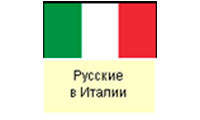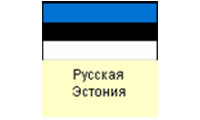The Old Believers of Riga
Arnold Podmazov
Old Russian Residents of Riga and Old Believers in the 18th century
Already since the founding of Riga, which was first mentioned in the written sources in 1201, a number of residents of Slavic descent have been living there constantly or stayed there temporarily. The existence of a “Russian Quarter” in Riga since 1212 is substantiated by the trade agreement with Smolensk of 1229. In the 13th century an Orthodox church of St. Nicholas the Wonderworker was also built in this city. In the course of the Livonian War (1558–1583), the activities of the “Russian Quarter” were suspended, and the church was closed down.
In the 1640s the “Russian Quarter” was restored outside the city walls, but in the course of the Northern War (1700–1721) it was closed down again. Some part of Russian population, however, still continued to live on the outskirts of Riga. The favorable living conditions for the Old Believers did not change even after the incorporation of Vidzeme and Riga into the Russian Empire. The 1721 Niestadt Peace Treaty affirmed all the privileges of the Baltic landed gentry. Local authorities were wary of the strengthening of the Orthodox Church, and through it of the growing influence of the central imperial power, and thus were not eager to combat the Old Believers. For this reason, for hundred years more, up until the end of 1820s, the Old Believers living in Riga and its suburbs were out of reach both for the Tsarist administration and for the official Orthodox Church.
At the same time, the Old Believers of Riga were given to experience themselves the harsh policies of Peter the Great (1672–1725, reigned as Tsar since 1682 and as Emperor in 1721–1725). Despite Peter’s usually pragmatic policy with regard to different confessions, the taxation burden during Peter the Great’s reign was unbearable for Old Believers. Though the Old Believers had gained possibility for legal existence, in return they had to pay double taxes and a fee for the right to keep their beards, in addition to wearing distinctive clothing. Just as before, they were deprived of all civil rights.
The second half of the 18th century was a relatively beneficial period for the Old Believers, as far as their legal status was concerned. The mitigation of persecutions continued throughout the reign of Catherine II (1729–1796, reigned in 1762–1796). In her 1762 and 1763 manifestos she called back to homeland the Old Believers who had earlier fled the country. During the reign of Catherine the Great, the Old Believers’ communities in many cities of the Empire managed to legalize their status, and, as a result, these soon turn into new centers for the Old Believers’ faith. Among such new centers were, first of all, the Popovtsy Rogozskaya Community (since 1771) and the Bespopovtsy (Fedoseyevian) Preobrazhenskaya Community (since 1771) in Moscow. The latter one had especially close ties with the Old Believers in Riga.
The second half of the 18th century saw a rapid development of trade and industry in Riga. While the decisive role in the economical development of Riga of that time belonged to the financial capital of the Baltic German nobility and traders, in some branches of industry, however (such as production of leather goods, soap, bricks etc.), significant share of capital belonged to Russian traders, the first among whom were Old Believers. Thus, in 1770 a leatherwork factory was built near Riga, sponsored by an Old Believer merchant N. Artemyev. Another noteworthy owner of a leatherwork factory was S. Dyakonov whose factory was the largest in Riga and one of the largest in Russia.
Up to the middle of the 18th century, Old Believers of Riga did not have a church for their own community. Prayer services were taking place in private homes. In 1760 a significant event occurred in the life of the Riga Old Believers – the dedication of a communal church of the Nativity of Christ and of the Dormition of the Theotokos. The first public Old Believers’ church in Riga was consecrated by Feodor Nikiforovich Samansky (1696?–1771), a renowned spiritual father, who had established several communities in Courland and Lithuania. The Bespopovtsy Old Believers esteemed F. Samansky very highly, as he was invited to the Councils that took place in Moscow and St. Petersburg and participated in the famous “Polish” Council in 1752. Since the consecration of the church in Riga, Feodor Samansky was its spiritual father. He was the founder of the Book Depository of the Riga Grebeschikov Community and it was during his time that the hospital was opened.
Content
- Introduction
- Schism and “Old Belief”
- Beginnings of the Old Believers on the territory of Latvia
- Confessional Characteristics of Old Believers in Latvia
- Old Believers’ Church Building and Liturgy
- Books and Book Culture
- Iconographic Traditions of Riga Old Believers
- Pomorian Old Believer Traditions of the Art of Copper Casting
- Old Believer Churches in Riga
- Old Believer Societies in Riga
- Old Russian Residents of Riga and Old Believers in the 18th century
- The Years of Prosperity and the Years of Misery: Riga’s Old Believers in the 19th Century
- Riga Old Believers at the Turn of 19th and 20th Centuries
- Riga Old Believers in the Independent Latvia (1918–1940)
- Riga Old Believers During the Soviet Period (1940–1941, 1944–1991)
- Riga Old Believers after the Restoration of Latvia’s Independence
- Photogallery
- About the Project. The Old Believers of Riga: 250 Years of Cultural Historical Experience







